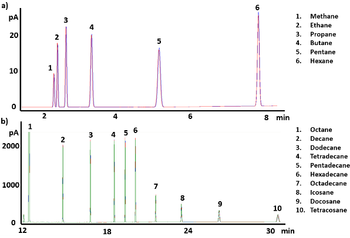
Discover how a novel alicyclic polydimethylsiloxane stationary phase enhances gas chromatography for precise carbon number grouping and hydrocarbon analysis.

Rob Shellie, PhD, is Professor in the Tasmanian Institute of Agriculture at University of Tasmania. Rob is a widely recognised analytical chemist specialising in advanced chromatographic techniques. He has a deep and long-standing engagement with multidimensional gas chromatography, particularly comprehensive two-dimensional gas chromatography (GC×GC) and its hyphenation with mass spectrometry.

Discover how a novel alicyclic polydimethylsiloxane stationary phase enhances gas chromatography for precise carbon number grouping and hydrocarbon analysis.

UV spectroscopy is an effective approach for tandem or parallel detection in gas chromatography, particularly in separations that require narrow bandwidths, such as GCxGC.

The principal aim of this work was to provide a perspective with practical utility in streamlining the chromatographic method development in pharmaceutical industries based upon predicting the chromatographic retention times from molecular structures. Workflows were suggested with a focus on reversed-phase LC, IC, and HILIC as the three major techniques. Unlike HILIC, retention prediction in both reversed-phase LC and IC can benefit from the maturity of these techniques and the transparency of their retention mechanisms. In reversed-phase LC the solute coefficients in the hydrophobic subtraction model and in IC the a and b values in the linear solvent strength model can be the subject of modelling with their subsequent use in retention prediction. A workflow for HILIC can be based on the design of experiments approach, to account for all major contributors to the retention mechanism, and direct correlation of experimental retention times to the molecular descriptors.
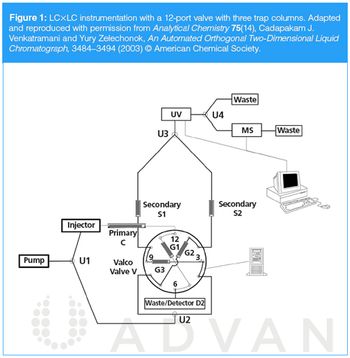
The interface between the two separation dimensions is a key element of any comprehensive two‑dimensional liquid chromatography (LC×LC) system. LC×LC has typically been implemented by using one or more switching valves, equipped with either sampling loops or trap column(s). Temperature manipulation is a relatively unexplored yet promising route towards non-valve-based LC×LC. The fairly recent emergence of thermal modulation has provided a less conventional method for performing LC×LC separations. This article illustrates the variety of commonly used modulators, paying specific attention to focusing modulators.

A highly sensitive and selective mercuric oxide–based reduction gas detector was successfully used for parts-per-billion level gas chromatography (GC) determination of ethylene in various matrices such as in the monitoring of fruit ripening, ambient air, and industrial solvents.

A practical and reliable analytical procedure that incorporates MDGC with a planar microfl uidic device as a Deans switch was developed for the characterization of chlorinated degreasers in marine gas oil.
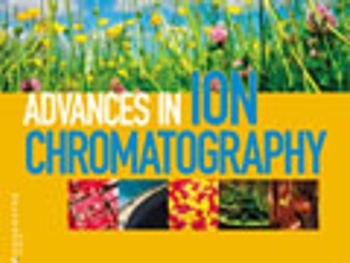
Computer-based methods can simulate separations for a wide variety of analytes, columns, and eluents.

Describes a novel approach for the enantioselective separation of spearmint oil incorporating a fluidic modulation system.

Demonstrating the suitability of a new wax stationary phase for GCxGC analysis of essential oils

Differential flow modulation is an inexpensive way to perform GCÃ-GC separations which has been attracting growing attention recently. Differential flow modulation uses high carrier gas flow rates in the second dimension column so it is widely thought that this rules out direct coupling with mass spectrometry. However direct coupled GCÃ-GC-QPMS using differential flow modulation is reported here for the first time using an unmodified mass spectrometer comprising a dual inlet turbomolecular pump and fast scanning quadrupole mass analyser. The suitability of the approach for characterization of essential oils is demonstrated.

Published: October 1st 2021 | Updated:
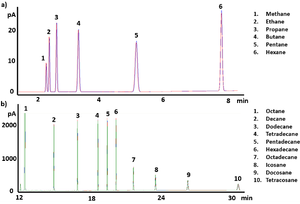
Published: September 17th 2025 | Updated:
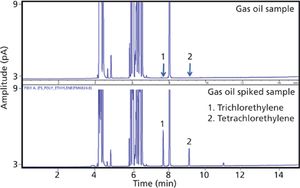
Published: August 1st 2013 | Updated:

Published: April 2nd 2013 | Updated:

Published: October 1st 2011 | Updated:

Published: February 1st 2010 | Updated: